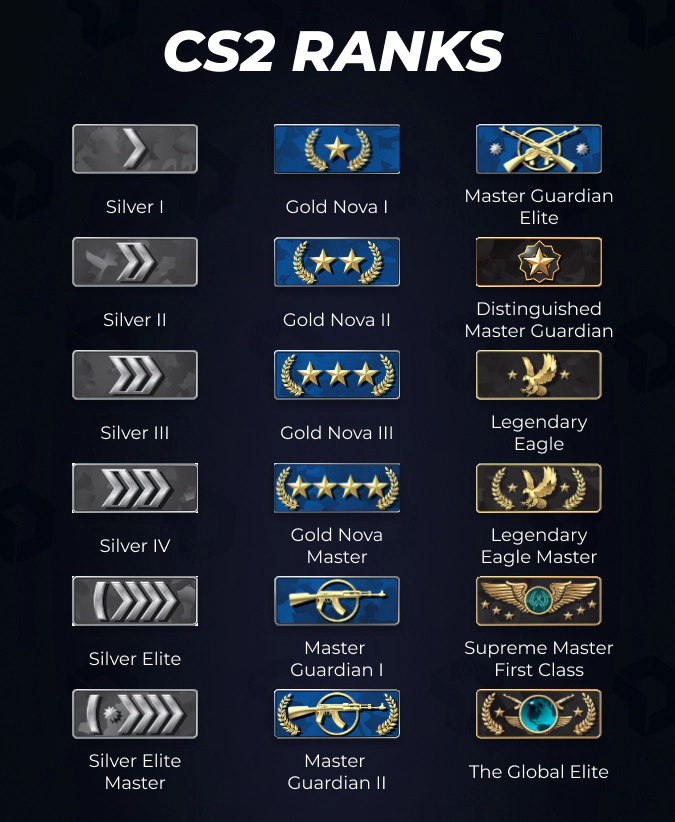Print Fix Hub
Your go-to source for everything print-related, from troubleshooting to tips.
How CS2 Matchmaking Improvements Are Revolutionizing Team Dynamics
Discover how CS2 matchmaking upgrades are transforming team dynamics and boosting your gameplay experience. Don't miss out on the revolution!
The Evolution of CS2 Matchmaking: Key Improvements and Their Impact on Team Dynamics
The evolution of CS2 matchmaking has seen significant upgrades that revolutionize the way players connect and compete. Initially criticized for its inconsistencies, modern matchmaking now utilizes more sophisticated algorithms that prioritize player skill, experience level, and team composition. This evolution not only enhances the overall gaming experience but also leads to a more balanced competition. Key improvements include the implementation of dynamic matchmaking systems that adapt in real-time, ensuring that matches are not just fair but also engaging. As a result, players are more likely to experience satisfying victories and challenging defeats, fostering a deeper investment in the game.
Moreover, the impact of these advancements goes beyond individual matches; the development of CS2 matchmaking has reshaped team dynamics significantly. With players encountering more balanced teams, communication and coordination become paramount. Teams can now rely on better synergy, as players are matched with others who complement their play styles. This fosters a culture of teamwork and strategic collaboration, enhancing the social aspect of gaming. Furthermore, changes in player grouping—such as the introduction of ranked and unranked modes—encourage players of varying skill levels to join forces, adapting their strategies to the strengths of their teammates and ultimately leading to a richer gameplay experience.

Counter-Strike is a popular tactical first-person shooter game where players engage in team-based combat. One of the key aspects of the game is the variety of weapons available, including the iconic m4a1s skins that players can customize to enhance their gameplay experience.
How CS2 Matchmaking is Enhancing Player Collaboration and Performance
The introduction of CS2 Matchmaking has revolutionized the way players interact and collaborate in competitive gaming environments. By utilizing advanced algorithms, the matchmaking system intelligently pairs players of similar skill levels, ensuring that every match is both challenging and enjoyable. This emphasis on balanced gameplay fosters collaboration among team members, as players must adapt to different roles and strategies based on their opponents. As a result, communication becomes paramount, leading to the formation of cohesive teams that can work together to outperform their competition.
Moreover, CS2 Matchmaking enhances overall performance by actively promoting skill development through targeted matchmaking. Players are gradually exposed to increasingly difficult opponents, pushing them to refine their abilities and learn from their experiences. This continuous cycle of challenge and improvement not only helps individuals grow but also elevates the level of play within the community. When players focus on teamwork and strategy, it cultivates a positive atmosphere that encourages cooperation and friendly competition, ultimately enriching the gaming experience.
What Do CS2's Matchmaking Changes Mean for Team Strategies?
The recent matchmaking changes in Counter-Strike 2 (CS2) have significant implications for team strategies. With a revamped ranking system that prioritizes skill-based matchmaking over pure win-loss records, teams must adapt their approaches to foster cohesion and enhance communication. By focusing on team dynamics and role specialization, squads can maximize their chances of success in this new environment. Understanding how the matchmaking algorithm evaluates player performance will be crucial for teams seeking to climb the ranks.
Moreover, these changes encourage a more tactical mindset in gameplay. Teams can no longer rely solely on individual skill; instead, they must be strategic in their use of utility, map control, and team synergy. Emphasizing team strategies such as coordinated execution and adaptive playstyles will be key in overcoming opponents. As players become more aware of the new matchmaking intricacies, the competitive landscape will evolve, necessitating continuous adjustments to team strategies for sustained success.